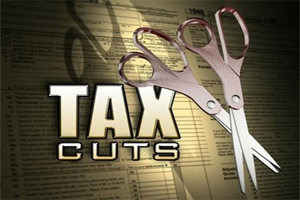OKLAHOMA CITY – Governor Mary Fallin yesterday signed an income tax cut measure into law. Senate Bill 1246 will gradually lower Oklahoma’s top income tax rate from 5.25 percent to 4.85 percent over several years. The cuts are dependent on revenue triggers, meaning general revenue in Oklahoma must see an increase before the cuts take effect.
“This is a responsible, measured tax cut that will make Oklahoma more economically competitive while providing much needed tax relief to working families,” said Fallin. “If Oklahoma wants to attract and retain good jobs – rather than losing them to neighboring states – we must improve our tax climate. I am proud that the Legislature has taken action to do so and I am happy to sign this bill into law.
 “This tax cut will put more than $200 million annually into the economy and make Oklahoma a better place to do business, meaning more opportunities and jobs for Oklahoma families and more revenue for core government services.”
“This tax cut will put more than $200 million annually into the economy and make Oklahoma a better place to do business, meaning more opportunities and jobs for Oklahoma families and more revenue for core government services.”
SB 1246 affects Oklahoma’s top income tax bracket, which applies to individuals earning more than $8,700 a year or couples earning more than $15,000 a year. The Tax Commission estimates that approximately 1,726,000 taxpayers will be placed in the top income tax bracket in tax year 2016, resulting in a tax cut to 63 percent of all returns filed under SB 1246.
“Most Oklahomans will receive a tax cut from this legislation,” said Fallin. “But every Oklahoman will benefit from a stronger economy and a state that is more attractive to work, live and invest in. SB 1246 responsibly lays the foundation for sustained economic growth, job creation and the long term growth of state revenue.”
An analysis of recent income tax reductions shows that responsibly reducing the income tax does not result in a net decrease in tax collections to the state General Revenue Fund (GRF).
In 1998, the Legislature passed and Governor Frank Keating signed a bill reducing the top income tax rate from 7.0 percent to 6.75 percent, which was estimated to reduce GRF income tax collections by $49.7 million in Fiscal Years 1999 and 2000. During that time, total GRF collections from the four major tax sources alone – income, sales, gross production and motor vehicle taxes – grew by $184.3 million. Sales and use taxes alone over the same period grew by $50.5 million, enough to pay for the income tax reduction.
Legislation enacted during the 2005 to 2007 legislative sessions collectively and signed by Gov. Brad Henry reduced the top income tax rate from 6.65% to 5.50%, which was estimated to reduce GRF income tax collections by $283.1 million in Fiscal Years 2006 to 2008. During that time, total GRF collections from the four major tax sources alone grew by $688.8 million – more than enough to pay for the estimated impact to the GRF of the reduced income tax rate. Again, sales and use taxes alone grew by $308.2 million over that same time, enough to pay for the income tax reduction.
 SB 1246 reduces the top personal income tax rate from 5.25 percent to 5 percent in Tax Year 2016. The tax cut is dependent on a revenue trigger that requires projected state GRF collections for Fiscal Year 2016 to be greater than projected Fiscal Year 2014 GRF collections. If revenue growth continues, then a second reduction will take place lowering the top rate from 5 percent to 4.85 percent no sooner than two years after the 5 percent rate is enacted if sufficient funds are there to cover the cost of the reduction.
SB 1246 reduces the top personal income tax rate from 5.25 percent to 5 percent in Tax Year 2016. The tax cut is dependent on a revenue trigger that requires projected state GRF collections for Fiscal Year 2016 to be greater than projected Fiscal Year 2014 GRF collections. If revenue growth continues, then a second reduction will take place lowering the top rate from 5 percent to 4.85 percent no sooner than two years after the 5 percent rate is enacted if sufficient funds are there to cover the cost of the reduction.

